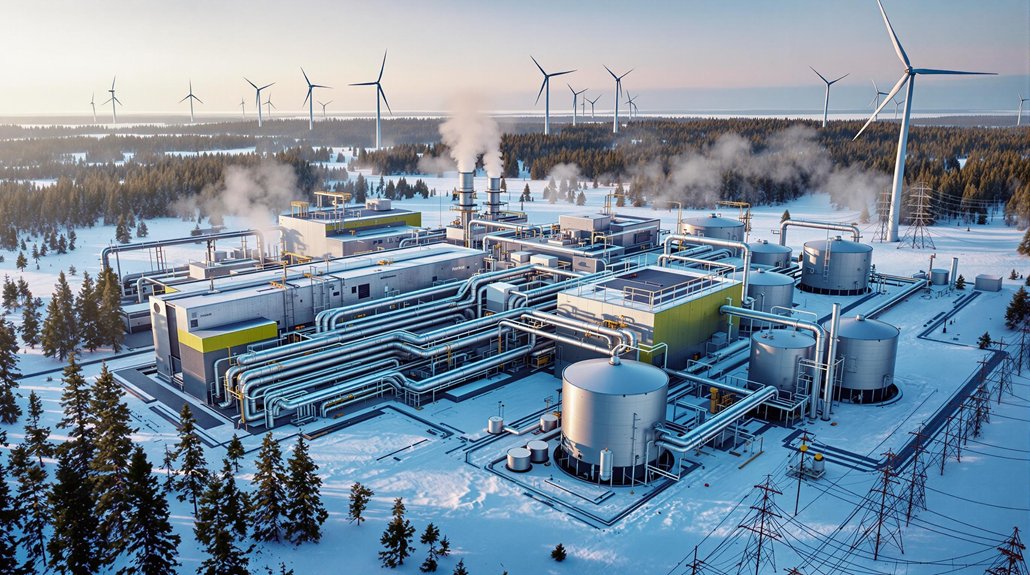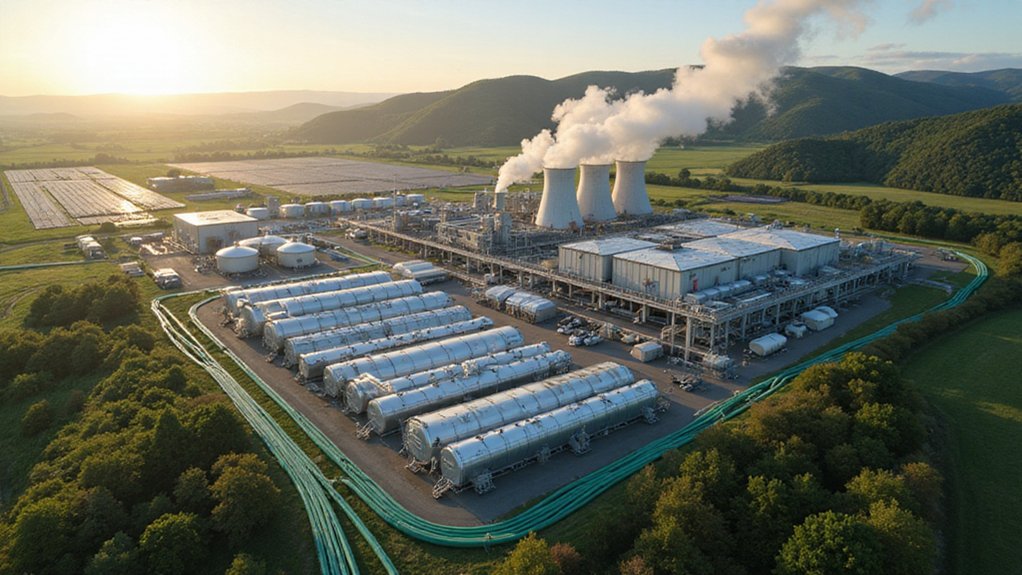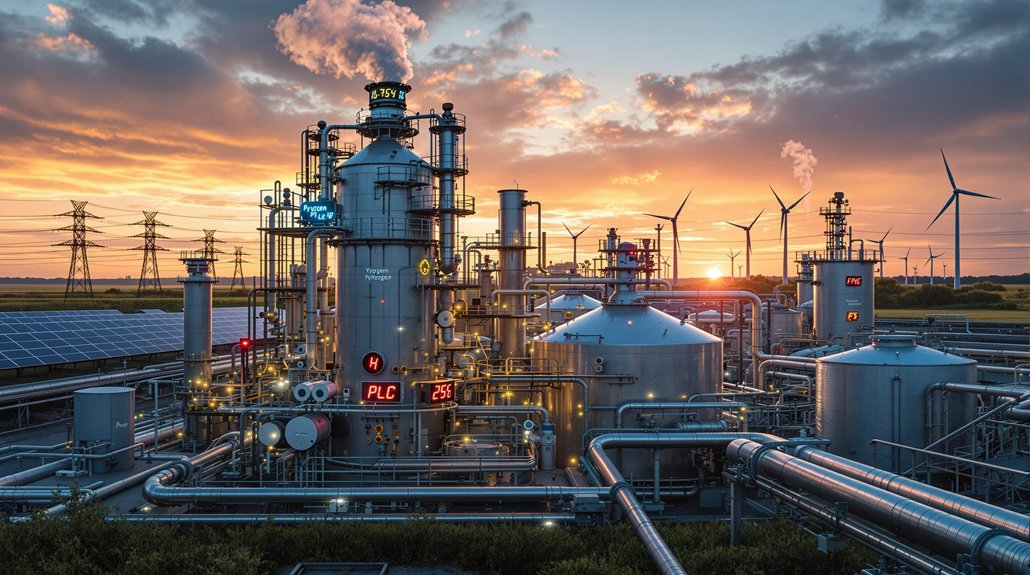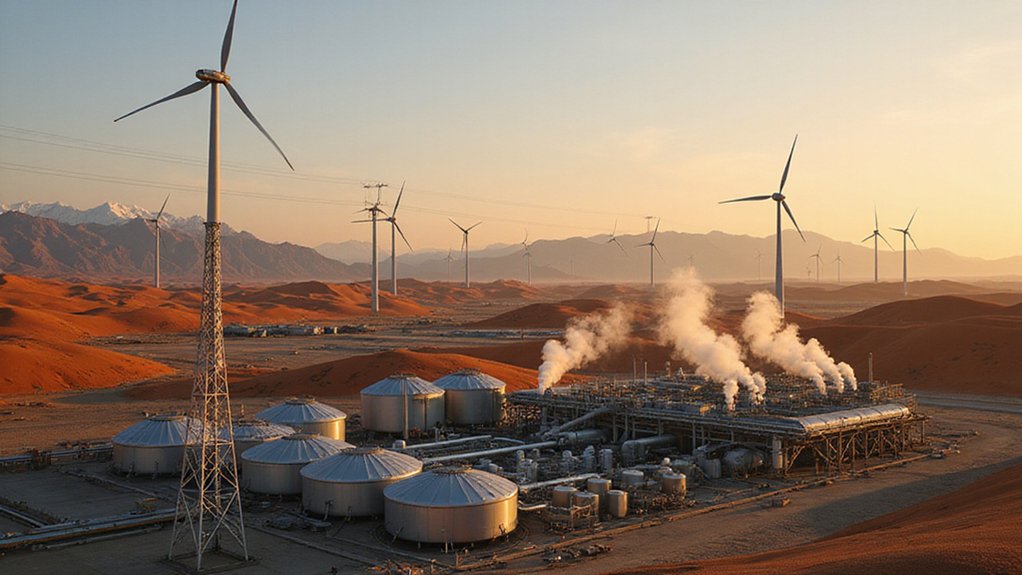Finland’s green hydrogen industry has reached a significant milestone. P2X’s Harjavalta plant, the country’s first commercial-scale hydrogen facility, is now operational. The 20 MW plant will cut CO2 emissions by 40,000 tonnes yearly—equivalent to taking 20,000 gas cars off the road. This development supports Finland’s target to produce 1 million tons of green hydrogen by 2030. What other environmental benefits might this clean energy breakthrough bring to the Nordic nation?
How is a small Nordic nation positioning itself at the forefront of Europe’s green energy shift? Finland is making waves in the renewable energy sector with its ambitious hydrogen production goals. The country aims to produce 1 million tons of hydrogen annually by 2030, representing 10% of the EU’s clean hydrogen targets.
Finland’s green hydrogen transformation has taken a significant step forward with the launch of the Harjavalta plant, the nation’s first commercial-scale green hydrogen facility. With a 20 MW production capacity, this plant can reduce CO2 emissions by 40,000 tonnes per year. That’s equivalent to taking 20,000 gasoline cars off the road.
Finland’s Harjavalta plant marks a milestone in green hydrogen production, slashing emissions equivalent to removing 20,000 cars annually.
Currently, Finland consumes about 140 kilotons of hydrogen yearly, but this figure is expected to double by 2030. Wind power will be the main energy source for hydrogen production, taking advantage of Finland’s abundant renewable resources. The country’s modern electricity grid helps make hydrogen production efficient and reliable. Unlike conventional Steam Methane Reforming processes, Finland’s focus on electrolysis eliminates the 7-12 kg of CO₂ emissions typically produced per kg of hydrogen.
The economic benefits of this green shift are substantial. Hydrogen technologies could create between 60,000 and 115,000 jobs by 2035, contributing €16-34 billion to Finland’s economy. By 2045, these numbers could grow to 240,000 jobs and €69 billion in annual economic value.
Green hydrogen will help decarbonize energy-intensive industries like transportation, aviation, and shipping. It can replace fossil fuels in manufacturing and chemical production. The Harjavalta plant also plans to add methanation technology to expand its applications. Power-to-X technology enables the conversion of renewable electricity into various energy carriers for different applications. Companies are being urged to adopt green hydrogen solutions now rather than waiting for mandatory legislation that will inevitably restrict fossil fuel use.
Finland’s strategy isn’t just about domestic use. The country aims to become a global green hydrogen hub, with plans to export clean energy to support global climate goals. The waste heat from hydrogen production can even support district heating systems, further improving energy efficiency.
Through these initiatives, Finland is reducing its dependence on imported fuels while creating a sustainable energy future. The country’s leadership in hydrogen technology demonstrates how smaller nations can make big impacts in the fight against climate change.









